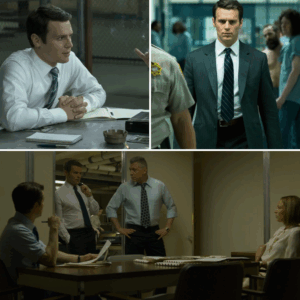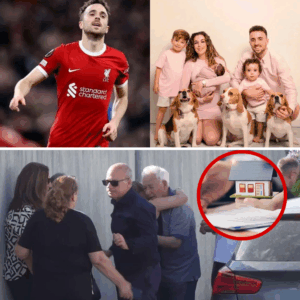On July 29, 1981, the world watched as Lady Diana Spencer married Prince Charles in a lavish ceremony dubbed the “wedding of the century” at St. Paul’s Cathedral. Watched by a record-breaking 750 million people across 74 countries, the event was a spectacle of royal grandeur, complete with a 25-foot train gown, 27 wedding cakes, and a £48 million price tag. Yet, beneath the fairy-tale facade, the day marked the beginning of a profound personal toll for Diana, who later described it as feeling like a “lamb to the slaughter.” Now, 44 years later, as of 11:11 AM +07 on Wednesday, July 30, 2025, the troubling truth about her emotional and physical struggles—culminating in a severe bulimia episode the night before—reveals a stark contrast to the public celebration, shedding light on a marriage that unraveled from the start.
Diana, just 20 years old at the time, entered the marriage with a mix of youthful optimism and naivety. The engagement, announced in February 1981 after a whirlwind courtship, saw her waist shrink from 29 inches to 23.5 inches due to rapid weight loss, a sign of the mounting pressure. Designers David and Elizabeth Emanuel had to adjust her iconic ivory silk taffeta dress five times, eventually sewing her into it on the wedding day. Behind the scenes, her calm demeanor masked a brewing storm. The night before, spent quietly at Clarence House with her sisters and bridal party, turned chaotic as Diana suffered a “very bad fit of bulimia,” binge-eating everything she could find before purging violently. She later confided to journalist Andrew Morton that she was “sick as a parrot,” a distressing indicator of the anxiety and self-doubt consuming her.
This bulimia episode, which Diana traced back to the week after her engagement, was triggered by a comment from Charles about her waistline—“a bit chubby here, aren’t we?”—and the looming presence of Camilla Parker Bowles, Charles’s long-time love. The night before the wedding, Diana’s distress deepened when she learned Charles had sent Camilla a personalized bracelet engraved with their initials, a gesture that shattered her illusions. Her sister Jane tried to lighten the mood, but the damage was done. Diana awoke on July 29 feeling “deathly calm,” a stark admission that she sensed the marriage was a mistake she couldn’t escape. This sense of being led to slaughter reflected not just her youth but a dawning realization of Charles’s emotional distance and the overwhelming role she was stepping into.
The wedding itself was a masterclass in royal pageantry. Diana arrived in the Glass Coach, her dress barely fitting through the cathedral doors, and navigated a three-and-a-half-minute aisle walk under the gaze of 3,500 guests. She famously flubbed Charles’s names in the vows, saying “Philip Charles Arthur George” instead of the correct order, and omitted “obey,” a bold departure from tradition that hinted at her inner resistance. Charles, too, stumbled, offering “thy goods” instead of “my worldly goods.” The global audience saw a picture-perfect union, but Diana’s unease was palpable when she spotted Camilla in the congregation, her pale gray veiled pillbox hat a silent specter. This moment, later shared with confidante Jennie Bond, underscored her feeling of walking into a trap, a sentiment echoed in her private lament that it was the “worst day of her life.”
The toll on Diana’s health became a defining struggle. Her bulimia, a secret disease she battled for years, was a symptom of deeper marital woes. During the five-month engagement, the constant scrutiny—amplified by Charles’s continued ties to Camilla—exacerbated her low self-esteem. She described it as a “repetitive pattern” of binging and purging, a cry for help misunderstood by those around her, including the royal family. Post-wedding, the pressure intensified with royal duties, public expectations, and the birth of Princes William in 1982 and Harry in 1984, periods marked by postpartum depression and further eating disorder episodes. Diana’s 1995 Panorama interview with Martin Bashir laid bare this struggle, though the interview’s controversial procurement later drew criticism.
Charles’s ambivalence compounded her plight. Friends revealed he had confided doubts about the marriage, even suggesting to Diana the night before that he didn’t love her, a confession that left her devastated. This lack of emotional support, coupled with his ongoing relationship with Camilla—evidenced by personalized cufflinks worn on their honeymoon—set a tone of betrayal. The honeymoon aboard the Royal Yacht Britannia, meant to be a romantic escape, instead highlighted their disconnect, with Diana later recalling moments of isolation. Biographer Penny Junor noted that both knew they were making a mistake walking down the aisle, yet the momentum of royal expectation made retreat impossible.
The public narrative of a fairy tale clashed with Diana’s reality. The wedding’s extravagance—featuring brill in lobster sauce, a chicken dish named after her, and a five-foot fruitcake—contrasted with her private turmoil. Street parties across the UK and a national holiday celebrated the union, but Diana’s rapid weight loss and pre-wedding bulimia hinted at a hidden crisis. The media, initially enamored, soon turned critical, amplifying every sign of strain. By 1992, Andrew Morton’s biography Diana: Her True Story, based on her secret tapes, exposed her suffering, shifting public perception from adoration to sympathy. The couple’s separation that year and divorce in 1996 marked the official end, though Diana’s death in 1997 cemented her as the “People’s Princess,” her struggles a poignant legacy.
In 2025, 44 years on, reflections on the wedding reveal a complex legacy. Diana’s bulimia, triggered by the event, persisted as a coping mechanism until therapy in the early 1990s, a battle she shared to destigmatize mental health. Her “lamb to the slaughter” sentiment, echoed by friends like Bond, highlights a marriage doomed by incompatible expectations—her hope for love against Charles’s duty-bound ambivalence. The royal family’s initial blame of her eating disorder as the marriage’s root cause, rather than a symptom, added to her isolation, a misjudgment she confronted with courage.
Today, the wedding’s image as a global spectacle is tempered by this troubling truth. Diana’s pre-wedding fit of bulimia, her calm resignation, and the Camilla shadow paint a picture of a young woman sacrificed to tradition. As her sons, William and Harry, carry forward her legacy—William with his family, Harry with his advocacy—her story remains a cautionary tale of the personal cost behind public glory. For Diana, the “wedding of the century” was less a triumph and more a prelude to a life of resilience amid heartbreak, a narrative that continues to resonate as the years pass.



